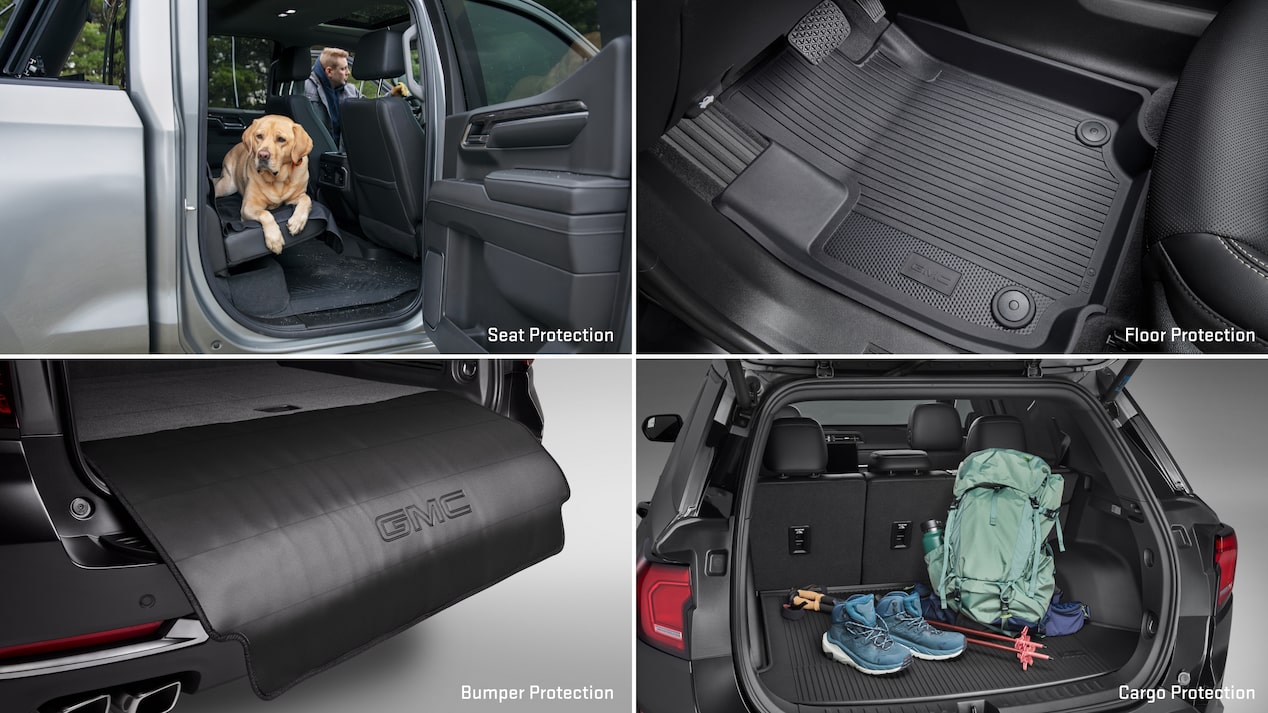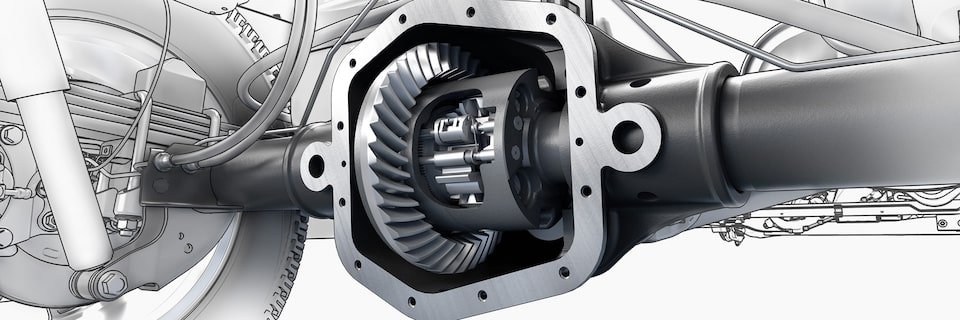GMC LIFE
HOW TO CHOOSE THE RIGHT AXLE RATIOS FOR YOUR TRUCK
Ordering the right axle ration can further help tailor a new GMC truck or SUV to your particular needs, especially if trailering.

Choosing between rear-and four-wheel drive and selecting an engine are key steps when purchasing a new pickup truck or SUV, but paying attention to axle ratios is also important. Ordering the right axle ratio can further help tailor a new GMC truck or SUV to your particular needs.
Axles and differentials contain gearing that allow power to be transferred from your engine and driveline to the wheels. The engine and transmission spin a driveshaft, which is coupled to a stout pinion gear within the axle. The pinion engages with and turns a larger gear known as a ring gear. The ring gear is attached to a differential case containing smaller gears that allow for chatter free cornering, which ultimately send power to the wheels.
Because the pinion is smaller in diameter than the ring gear, the drive shaft will spin at a higher speed than the axle shafts and wheels. This proportion is known as an axle ratio. Axle ratios may be expressed in notation as something along the lines of “3.42:1,” or a “3.42 rear axle.” In either case, it essentially means the drive shaft and pinion need to rotate 3.42 times in order to rotate the axle shafts once.
If the number of drive shaft turns required to turn the wheel goes up (i.e. 4.10:1) the ratio may be referred to as a higher numeric ratio. Higher numeric axle ratios require the driveline to spin more in order to turn the wheel once, but generally deliver more torque, which can improve off-the-line acceleration and help provide pulling power when carrying heavy loads or towing heavy trailers.
Conversely, if the number of drive shaft turns required to turn the wheel decreases (i.e.something like a 3.08:1) the ratio is known as a lower numeric axle ratio. Lower numeric axle ratios may help reduce how much an engine has to work while cruising at highway speeds, and can potentially help improve fuel economy.
The standard axle ratio found in a GMC truck or SUV has been carefully selected according to the vehicle’s specific body style and engine in order to provide the best all-around mix of performance, towing strength, and efficiency. For instance, the 3.42:1 ratio included on many Canyon V-6 and Sierra 1500 models offers a good all-around blend.
That said, if you regularly tow heavy trailers or prefer a peppier feel in acceleration, consider a truck equipped with a higher numeric axle ratio. While higher numeric ratios provide more pulling power, they will generally result in a reduction in fuel economy, as the engine will rev higher at a given vehicle speed compared to an identical truck equipped with a lower numeric axle ratio.
For more information, consult your GMC dealership on available axle ratios and which one might be best suited to your needs.
RELATED STORIES
TRUCKS
SIX TIPS FOR SAFE TRAILERING AND TOWING

Before you hitch a trailer up to your truck or SUV and hit the open road, consider these six tips.
TRUCKS
TONGUE WEIGHT: WHY IT’S KEY TO SAFE TOWING

Properly loading a trailer to maintain a proper tongue weight is paramount, especially when it comes to handling.
TRUCKS
HOW TO SET UP AND USE TRANSPARENT TRAILER ON GMC PICKUP TRUCKS

The GMC Sierra Heavy Duty and Sierra 1500 are designed and built to feature excellent power and advanced technology to help give confidence and ease with towing. One of these features is the available transparent trailer view. One of the class-leading available up to







































